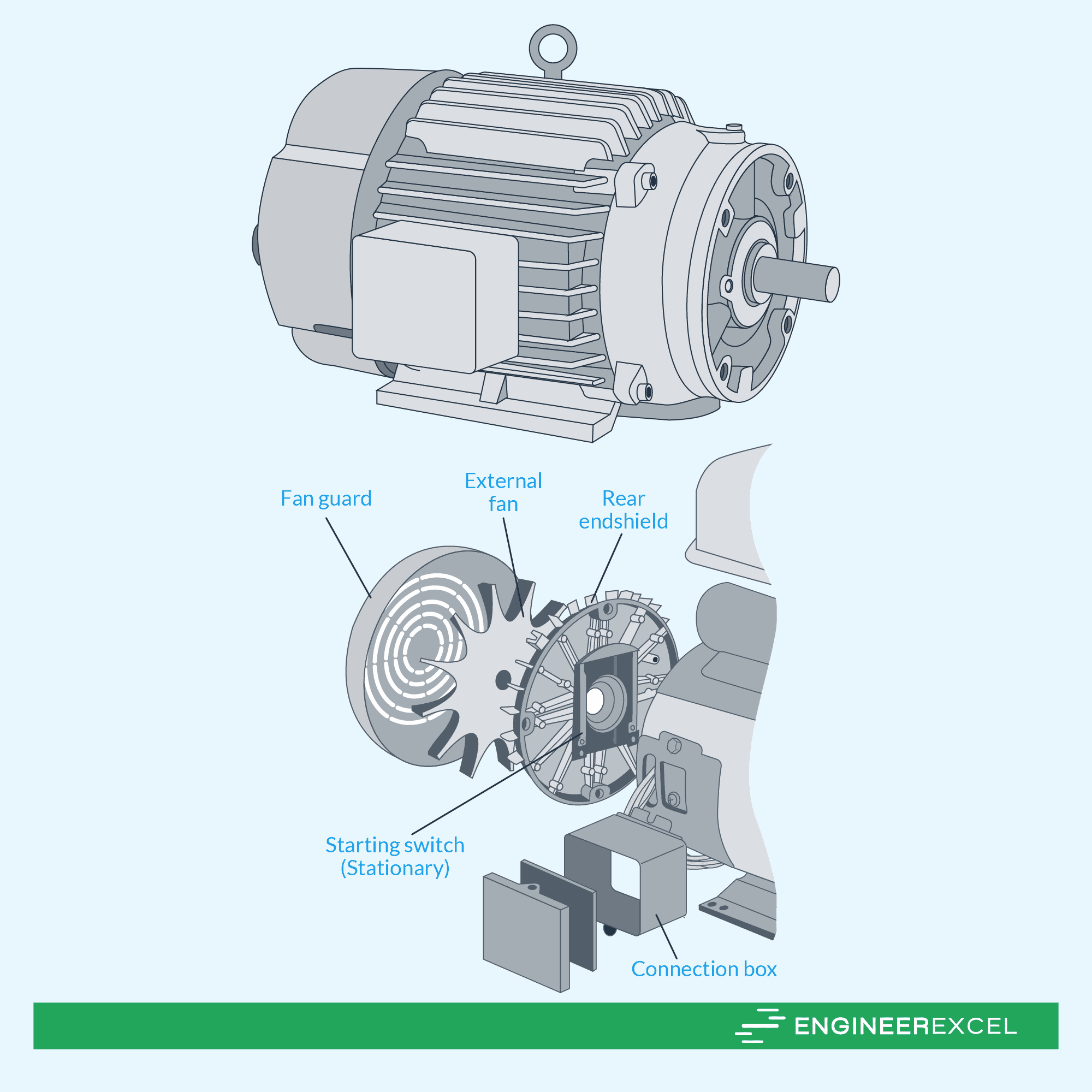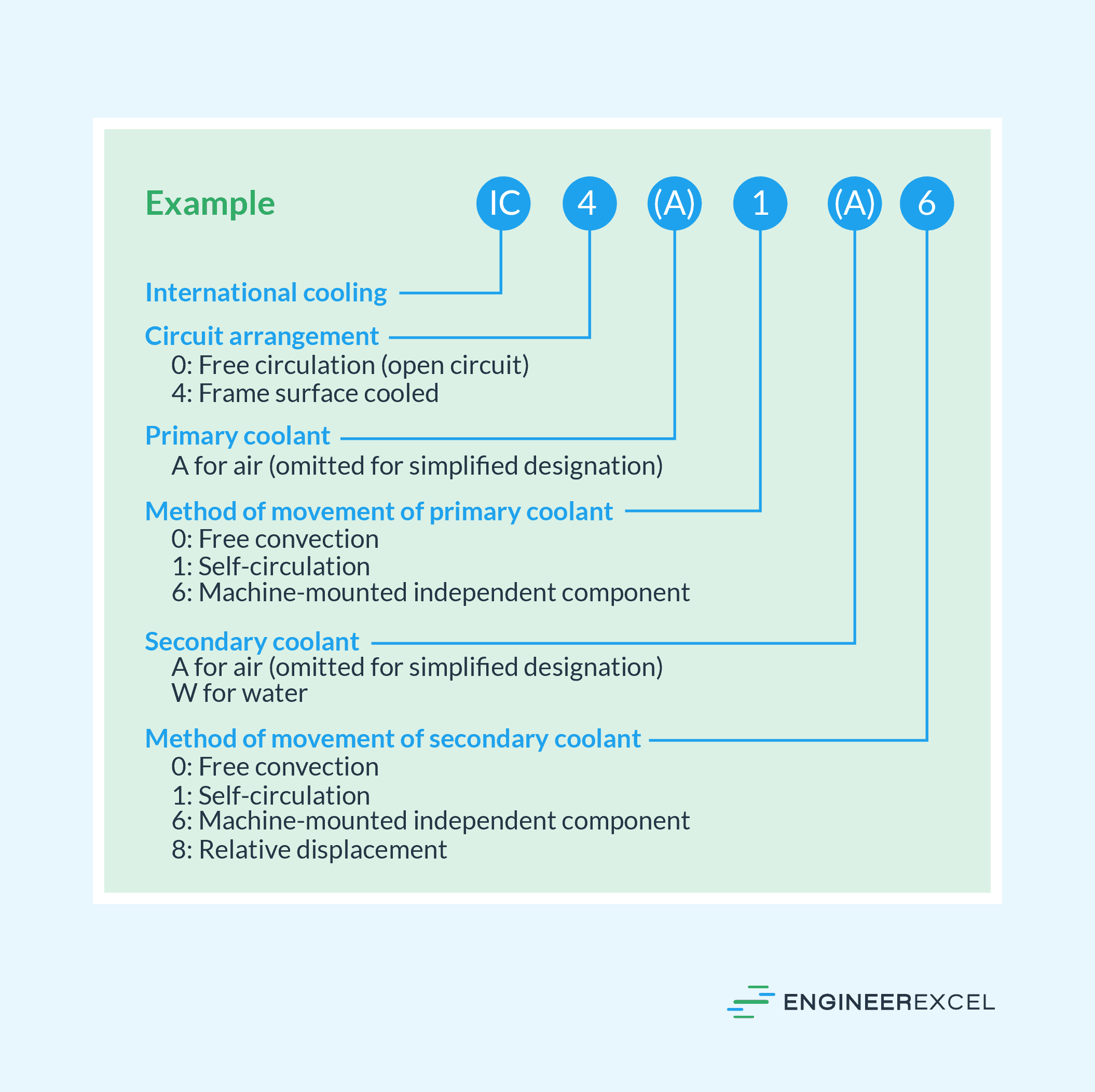Whether you are an engineer, technician, or simply someone interested in learning about electric motors, understanding the differences between TENV and TEFC enclosures is crucial. By selecting the appropriate enclosure, you can ensure that your motor operates efficiently, safely, and without any damage from external factors.

Read on to learn more about the construction, functionality, and performance of TENV and TEFC motors, and why selecting the right motor enclosure is essential for optimal performance and safety.
TEFC vs. TENV
In the electrical industry, two prominent standards define specifications for electric motors and enclosures: NEMA and IEC. NEMA (National Electrical Manufacturers Association) is prevalent in North America, while IEC (International Electrotechnical Commission) is adopted globally.
TENV and TEFC motors are classified under the NEMA standard.

Elevate Your Engineering With Excel
Advance in Excel with engineering-focused training that equips you with the skills to streamline projects and accelerate your career.
Both TENV and TEFC are considered as enclosed motors, which means that they are sealed to prevent the ingress of contaminants. Unlike open motors with vent openings, enclosed motors lack such vents, restricting the circulation of outside air within the motor.
While enclosed motors typically come at a higher cost compared to open motors, they provide enhanced protection, making them an ideal choice for applications that are exposed to dirt or damp conditions. Enclosed motors provide dust protection and offer a moderate level of water resistance. However, it is crucial to understand that they are not completely airtight.
TENV and TEFC are generally not designed to withstand high-pressure water or be submerged. Furthermore, without additional modifications, they are not explosion-proof, making them unsuitable for use in hazardous locations. Hazardous locations refer to environments that may contain explosive amounts of gas, vapor, or combustible dust, such as acetylene, ethylene, acetaldehyde, acetone, coal dust, and others.
While TENV and TEFC motors share several similarities, their key distinction lies in their cooling mechanisms. As the name suggests, a Totally Enclosed Non-Ventilated motor operates without a cooling fan. Instead, it relies solely on the natural convection of heat through the surface area of the motor enclosure for heat dissipation.
An actual photo of a TENV motor is shown below.

In contrast, a Totally Enclosed Fan Cooled (TEFC) motor incorporates an external fan that is directly connected to the motor shaft. This fan actively circulates ambient air over cooling fins located on the motor frame, effectively providing the necessary cooling during operation.
Below is an actual photo of a TEFC motor. Notice the presence of an external fan and a protective fan guard positioned adjacent to the rear end shield.

Functionality and Performance
The construction of TENV and TEFC motors are closely similar in terms of functionality and performance. However, the presence of an external fan in TEFC motors enables for a more efficient heat dissipation and allows the motor to operate at higher ambient temperatures.
This makes TEFC enclosures suitable for applications that involve high-temperature environments or those requiring continuous heavy-duty operations. The fan also helps to reduce the risk of overheating and prolongs the motor’s lifespan.
Despite their advantages, TEFC motor enclosures also have some limitations. The presence of the external fan makes TEFC motors more susceptible to damage from external factors like water, dust, or chemicals.
Therefore, additional protection measures, such as motor guards or filters, may be necessary in certain environments. Moreover, the need for the fan to operate continuously can result in a slightly higher power consumption compared to TENV enclosures.

TEFC motors are arguably the most commonly used motor in ordinary industrial environments. In fact, the highest volumes of AC machines manufactured are of TEFC design.
On the other hand, TENV motors are particularly well-suited for environments that are prone to dust or lint accumulation, as they often lead to fan clogging. Unlike TEFC motors, TENV enclosures are designed without external fans, making them less susceptible to damage from external factors. This absence of a fan not only contributes to quieter operation but also eliminates the need for regular fan cleaning and replacement maintenance.
However, because TENV motors release all excess heat through their motor body, they require extra amounts of metal and fins to optimize heat transfer. This makes a TENV motor slightly larger and heavier than an equally-sized TEFC motor.
Since TENV motors are designed to run at high surface temperatures, caution should be exercised to prevent direct human contact with the motor body. Placing inflammable objects in close proximity to the motor should also be avoided. In general, TENV motors are equipped with specialized high-temperature insulation for increased safety.
Since they have limitations in terms of heat dissipation, TENV motors are generally limited to low to moderate load applications or in environments with low ambient temperatures.
IP Rating
Similar to NEMA, the International Electrotechnical Commission (IEC) also provides designations to indicate the level of protection offered by a motor’s enclosure. However, there is a distinction in the way these designations are presented. NEMA designations are expressed in words, such as “Open Drip Proof” or “Totally Enclosed,” whereas IEC utilizes a two-digit Index of Protection (IP) Rating.
This IP Rating consists of two digits, where the first digit represents the motor’s protection against solid objects, and the second digit relates to its protection against water ingress. The criteria for IP Rating are listed in the table below.
By way of general comparison, both TEFC and TENV motors fall under IP 44, which means that they are protected against solid objects of over 1mm as well as against water splashes from all directions.
In addition to the IP Rating, the IEC employs a letter-and-number system to indicate the cooling method used by a motor. This code encompasses virtually all cooling methods, and it can range from a single letter and number to a complex four-letter, four-number code, as illustrated in the example format below.

For most practical purposes, IC 410 relates to TENV motors. The first digit means the frame surface is cooled; the second digit means that cooling is by convection only with no fanning action.
On the other hand, IC 411 relates to TEFC motors. The first digit again indicates frame-surface cooling, but the second digit shows fanning.
Importance of Selecting the Correct Enclosure
TEFC and TENV are only two of the most common motor enclosures widely used in different industries. In addition to these, there are other types like Open Drip Proof and Totally Enclosed Air Over, among others.
Each type has its own purpose, advantages, and disadvantages. Choosing the appropriate enclosure requires careful consideration of factors such as environmental conditions and operating requirements.
Motor enclosures serve the crucial role of protecting internal components like windings and bearings from moisture, chemicals, particles, and physical damage. They also play a vital role in ensuring the motor’s high temperatures and heat do not pose a risk to surrounding equipment and personnel. Therefore, selecting the right motor enclosure is essential not only for protecting the motor and maintaining performance, but also for ensuring safety during operation.
Assessing the operating environment is vital when deciding on the motor enclosure type as different environments present varying levels of contamination and risks. Factors such as exposure to high humidity or water, presence of contaminants, and operating conditions should be considered.
For instance, if the motor will be installed near personnel or other equipment, the potential heat generated by the motor must be taken into account to ensure safety and prevent adverse effects on nearby components or individuals.
By thoroughly evaluating all factors and considering the motor’s requirements and operating environment, an informed choice can be made regarding the suitable motor enclosure.
